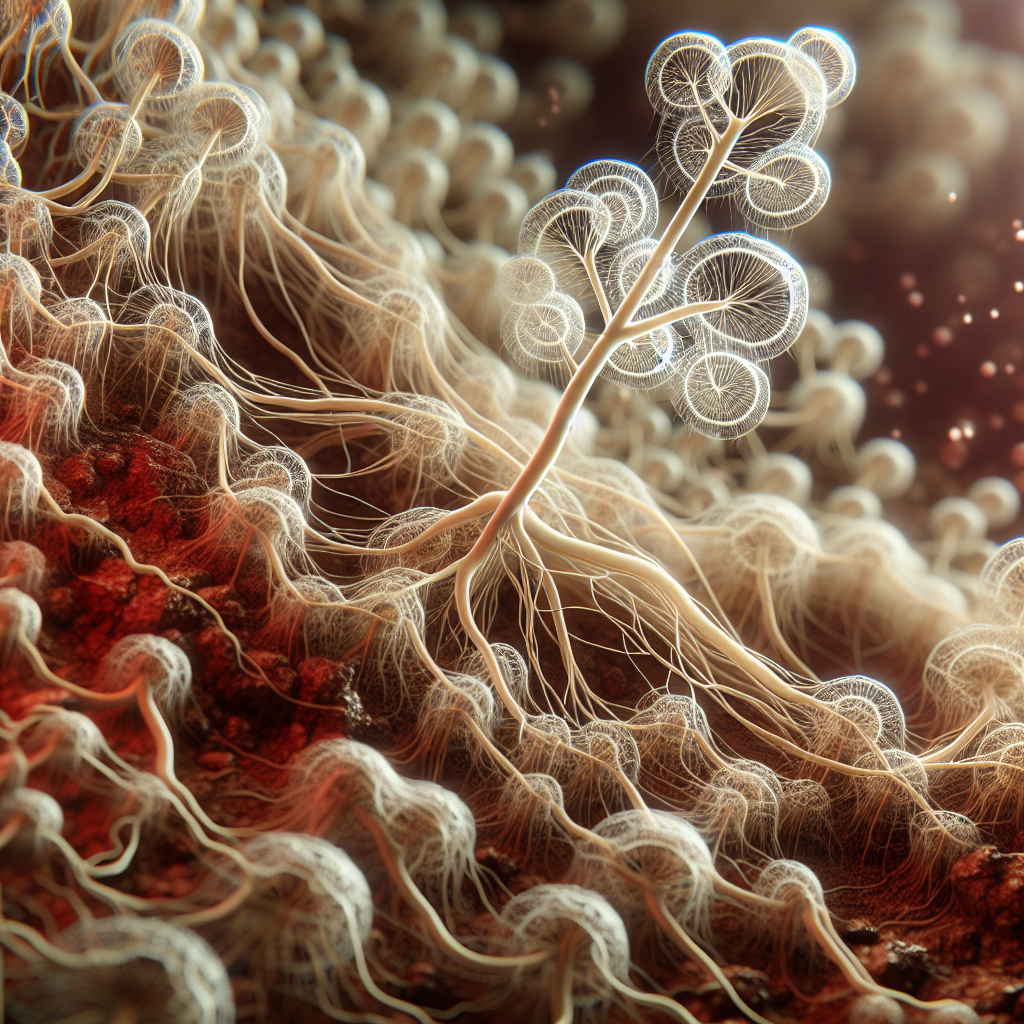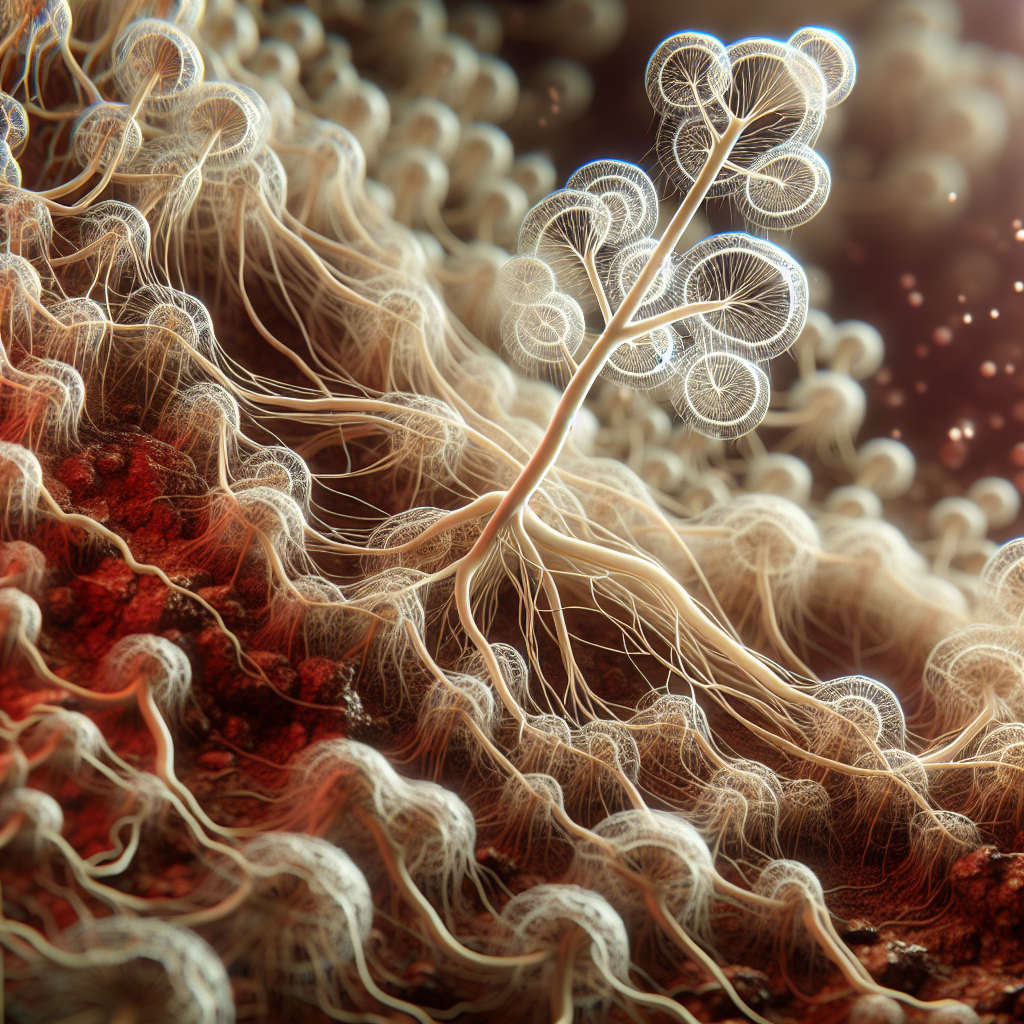Unlock the enigmatic world of plant life as you explore the crucial role that mycelium plays in their existence. “The Mysteries of Mycelium in Plant Life” offers an illuminating perspective, highlighting the intricate network of fungal threads that delicately intertwines with plant roots, promoting both their growth and survival. You’ll navigate through fascinating concepts, unraveling the instrumental contribution this delicate thread-like substance has, not just on individual plant health, but on entire ecosystems. Absorb the essence of this grand design of nature, as the article sheds light on the sheer power and potential of mycelium that too often goes unseen and undervalued.

Understanding Mycelium and Its Structure
Mycelium represents the vegetative part of a fungus, composed of a mass of branching, thread-like hyphae. It is an essential part of the fungus, integral to its nutrition, growth, and reproduction. Mycelium is often overlooked due to its below-ground existence and microscopic structure, but it’s a significant part of our biosphere with a crucial role in ecosystems.
Definition of Mycelium
Mycelium consists of a network of fine threads, or hyphae, that form the body of a fungus. This complex network enables the fungus to absorb nutrients and water, while also serving as the medium for reproduction. As an integral part of the fungal organism, mycelium is the primary means of growth and spread, providing a connection between the fungi and its environment.
Physical Composition and Form of Mycelium
Mycelium has a distinctive appearance, with hyphae creating intricate patterns as they spread through a substrate. Each hypha is a tubular structure with a cell wall composed mostly of chitin, a long-chain polymer of N-acetylglucosamine. Inside the hyphae contain cytoplasm, allowing nutrients to move up and down the length of the structure. Hyphae can form vast networks, spreading out to colonize available spaces and resources.
Different Types of Mycelium
Various types of mycelium exist, each with different features that serve specific roles. Septate mycelium refers to hyphae that contain cross-walls or septa, limiting the movement of cytoplasm and organelles between individual cells. In contrast, coenocytic mycelium lacks septa, allowing free movement within the hypha. The division into specific types helps in the categorization and understanding of different fungal species.
Role of Mycelium in Plant Life
Mycelium plays an often under-appreciated part in supporting plant life. As a primary decomposer, it breaks down organic matter, making nutrients available to plants. Additionally, it helps to maintain the structure and fertility of the soil.
How Mycelium Supports Plant Growth
Plants and fungi share a symbiotic relationship, with each providing essential resources that the other needs. The fungi derive carbon-based nutrients from the plants, while the extensive mycelium network assists the plant in the absorption of water and essential minerals. This mutual nutritional exchange promotes growth and development in both organisms.
Interaction of Mycelium with Plant Roots
Mycelium interacts closely with plant roots, forming mycorrhizal associations. These interactions significantly enhance the absorption capabilities of the plant’s root system. The hyphae penetrate the root cells, increasing the surface area for nutrient absorption, and transfer the absorbed nutrients directly to the plant.
Role of Mycelium in Soil Fertility
Mycelium contributes to soil fertility through the decomposition of organic matter. As a primary decomposer, it breaks down dead plant and animal material into simpler forms. This decomposition process recycles essential nutrients back into the soil, maintaining its fertility and ensuring the availability of necessary elements for plant growth.
Nutrient Cycling and Mycelium
Mycelium plays a vital role in nutrient cycling, contributing to soil health and productivity. It assists in nutrient absorption and distribution, and is a crucial player in composting processes.
Mycelium in Nutrient Absorption
By efficiently decomposing organic matter, mycelium makes nutrients readily available for plant uptake. Its hyphae spread widely, reaching areas beyond the root zone, and directly uptake nutrients from the environment. These nutrients are then transported back to the plant roots, supporting plant growth and development.
Influence of Mycelium on Nutrient Distribution
Mycelial networks influence nutrient distribution in soils. They transfer nutrients over different distances and between various soil horizons, ensuring a wide dispersal of essential elements needed for plant life.
Role of Mycelium in Composting
Mycelium plays a crucial role in composting, assisting in the breakdown of organic matter into humus, a nutrient-rich material. The decomposing activity of the fungi turns kitchen scraps, yard waste, and other organic materials into a valuable resource for plant growth.

Mycelium in Symbiosis with Plants
Mycorrhizal relationships, a type of mutualistic symbiosis between plants and fungi, significantly benefit both organisms. Plants get an enhanced ability to absorb nutrients, while fungi receive carbon-based nutrients produced by the plants.
Understanding Mycorrhizal Relationships
Mycorrhizas form when mycelium infiltrates plant roots, establishing an intimate association that significantly benefits both organisms. This symbiotic relationship enhances plant nutrient and water absorption, extends root systems, increases plant resistance to soil-borne diseases, and improves soil structure.
Benefits of Symbiosis for Plant and Mycelium
For plants, the advantages of mycorrhizal relationships include increased nutrient uptake, improved drought tolerance, and resistance to soil-borne diseases. The fungi, on the other hand, get access to carbon-based nutrients, fulfilling their nutritional requirements and stimulating their growth.
Common Plant-Mycelium Partnerships
Mycorrhizal symbioses are widespread in nature, with the majority of terrestrial plants forming such associations. From forest trees to crop plants, these partnerships support plant health and productivity, contributing significantly to terrestrial ecosystem functioning.
Mycelium and Environmental Resilience
Mycelium contributes to environmental resilience in multiple ways. Its soil-binding properties help prevent erosion, while its ability to sequester carbon and contribute to biodiversity bolsters ecosystem health and stability.
Protection from Soil Erosion
The extensive mycelial network binds soil particles together, enhancing soil structure and preventing erosion. This binding action keeps the soil in place, protecting it against water runoff and wind erosion, and maintaining landscape integrity.
Mycelium’s Role in Carbon Sequestration
Mycelium helps sequester carbon in the soil, contributing to efforts to mitigate climate change. As fungi decompose organic matter, they incorporate a part of the carbon into their biomass and the stable compounds they generate, effectively trapping it in the soil.
Contribution to Biodiversity
Mycelium contributes to biodiversity by supporting a variety of plant and animal species. Biodiversity, in turn, strengthens ecosystem resilience, promoting the stability and adaptability of ecosystems in the face of environmental changes.
Mycelium in Plant Health and Disease Control
Mycelium offers significant benefits for plant health and control of diseases. Acting as a biological pest control, it provides protection against harmful pathogens and boosts plant immunity.
Mycelium as a Biological Pest Control
Certain types of mycelium can act as a biological pest control, suppressing pest populations and reducing plant damage. These fungi either parasitize the pests or produce compounds that inhibit their activity, thus promoting plant health.
Protection Against harmful Pathogens
Mycelium can provide protection against pathogenic fungi and bacteria. Some fungi form protective layers around plant roots, creating a physical barrier that prevents pathogen invasion. Others can produce antibacterial and antifungal compounds that suppress pathogen growth.
Boosting Plant Immunity
Research indicates that mycorrhizal fungi not only protect plants from pests and pathogens directly but also help enhance plant immune responses. This immune-boosting effect makes plants more resistant to diseases, improving their overall health and productivity.
Influence of Mycelium on Water Regulation
Mycelium significantly influences water regulation in soil. Its water retention capabilities and role in drought resistance contribute to soil health and plant survival.
Water Retention Capabilities of Mycelium
Mycelium can retain substantial amounts of water, alleviating the impact of water stress on plants and soil biota. The hyphae’s ability to hold water also helps maintain soil moisture levels, particularly in dry periods, supporting plant growth and survival.
Mycelium in Drought Resistance
Mycelium plays a crucial role in alleviating the effects of drought on plants. By holding water and transferring it to the plant roots, mycelial networks can help plants survive under water-scarce conditions. Furthermore, mycorrhizal associations can enhance plant water uptake efficiency, improving their drought resistance.
Influence on Water Flow and Absorption
Mycelium significantly influences water flow and absorption in the soil. By providing pathways for water transport and enhancing soil structure, mycelial networks can increase the soil’s water-holding capacity and regulate the movement of water.
Applications and Potential of Mycelium in Agriculture
Mycelium has immense potential in agriculture, offering benefits such as improved soil health, increased crop yield, and enhanced resilience to stresses.
Mycelium in Organic Farming
Organic farming practices often utilize mycelium to enhance soil fertility and maintain crop health. Incorporating mycorrhizal fungi into agricultural systems can increase nutrient uptake efficiency and disease resistance, reducing the need for chemical fertilizers and pesticides.
Potential for Increased Crop Yield
By improving nutrient absorption and providing protection against pests and diseases, mycelium can significantly contribute to increased crop yield. Moreover, the improved drought resistance endowed by mycorrhizal relationships can secure yield under water-scarce conditions.
Usage in Soil Condition Improvement
Mycelium can be used to improve soil conditions. Its decomposing activity enriches the soil with nutrients, while its soil-binding properties enhance soil structure. Incorporating mycelium into agricultural systems can help maintain soil health and fertility, supporting crop growth and productivity.
Mycelium in Ecological Restoration
Mycelium plays a crucial role in ecological restoration, contributing to reforestation efforts, rebuilding healthy soil ecosystems, and reviving degraded and contaminated environments.
Reforestation and Mycelium
In reforestation projects, mycelium can assist newly planted trees in establishing and surviving, by enhancing their nutrient and water absorption and providing protection against pests and diseases. Mycorrhizal fungi have thus become an essential component in forest restoration efforts worldwide.
Building Healthy Soil Ecosystems
Mycelium contributes significantly to building healthy soil ecosystems. By decomposing organic matter, recycling nutrients, and enhancing soil structure, mycelial networks support a diverse array of soil organisms and promote the functioning of the soil ecosystem.
Reviving Contaminated and Degraded Environments
Mycelium can detoxify contaminated environments through the process of mycoremediation. Certain fungi can degrade or transform hazardous substances, such as heavy metals, hydrocarbons, and pesticides, into less harmful forms, helping to revive degraded and contaminated environments.
Future Research and Developments in Mycelium Studies
Mycelium continues to attract research interest due to its diverse roles in ecosystems and potential applications in agriculture and environmental management.
Emerging Trends in Mycelium Research
Emerging trends in mycelium research include the development of mycelium-based products, such as biopesticides and biodegradable materials, and the exploration of the role of mycelium in mitigating climate change. Further understanding of mycorrhizal relationships and their implications for plant health and productivity is another area of active research.
Potential Future Applications in Agriculture
Future applications of mycelium in agriculture could include more effective biopesticides, improved composting methods, and novel approaches to enhancing soil health and fertility. Research is also underway to explore the use of mycelium in climate-smart agriculture, particularly in improving crop resilience to climate-induced stresses.
The Role of Mycelium in Climate-Resilient Agriculture
Mycelium could play a vital role in developing climate-resilient agricultural systems. Its contribution to carbon sequestration and improving drought resistance can help secure agricultural productivity under changing climate conditions. Plus, enhancing the understanding of mycelial functions can guide strategies to harness its potential fully.
In conclusion, mycelium holds a powerful position within ecosystems and agriculture, with its range of benefits spanning from nutrient cycling, assisting plant growth, fostering biodiversity, to helping in combat against climate change. As we continue to learn and understand the abilities of mycelium, its potential roles in a sustainable future become increasingly evident.
